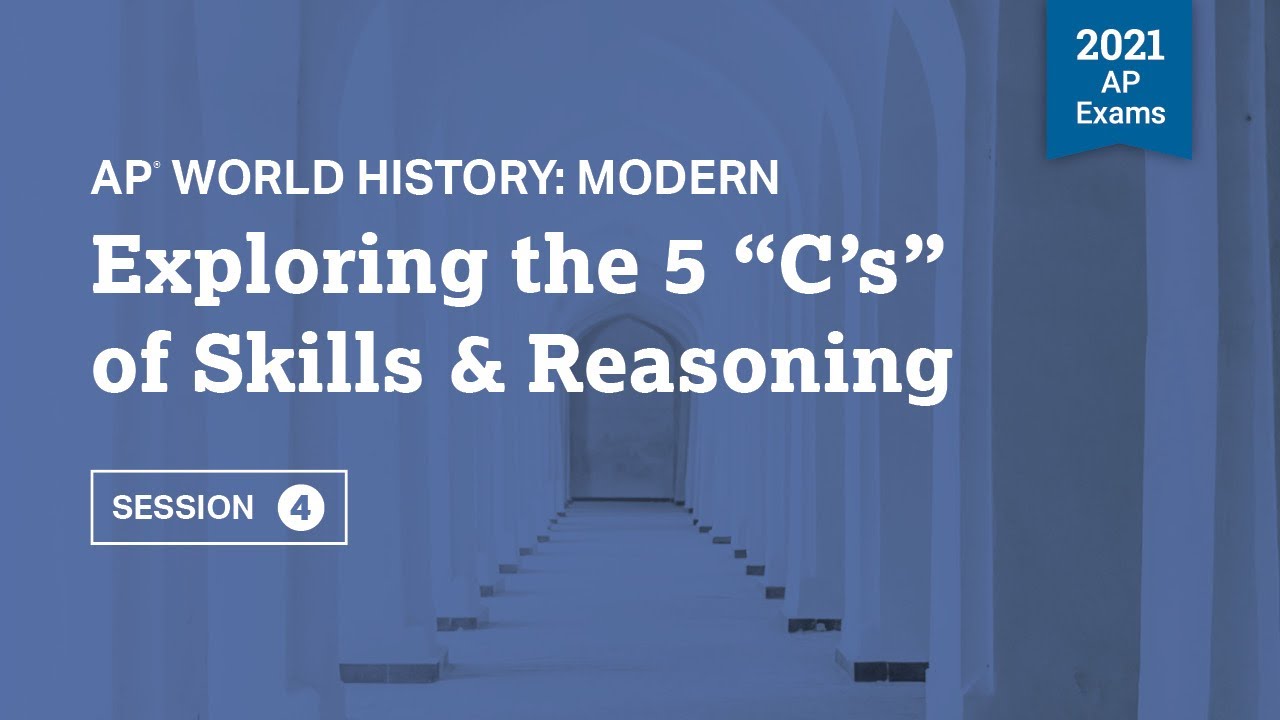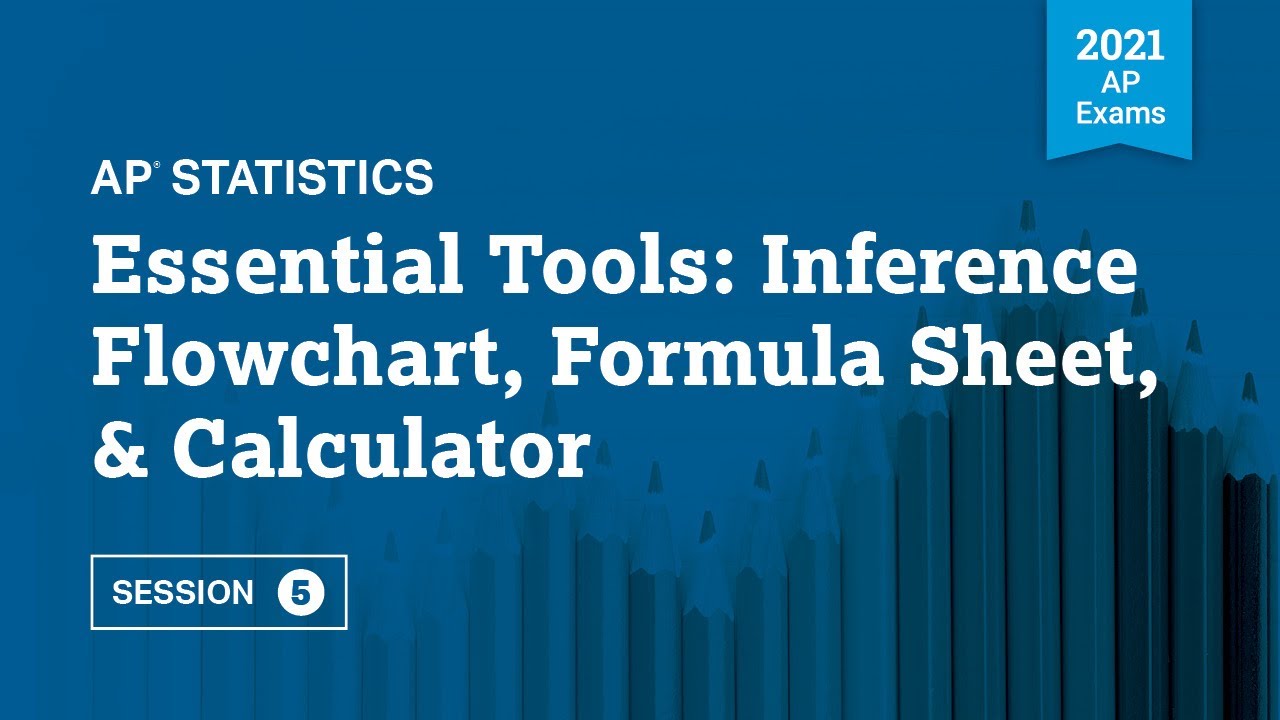2021 Live Review 2 | AP World History | Discussing Units 4-6
TLDRThe video script is an informative session designed to prepare students for the AP World History exam. It focuses on reviewing content from units four to six, spanning from 1450 to 1900, and emphasizes the development of the skill of contextualization. The session uses specific examples, such as the Siege of Aden and the Haitian Revolution, to illustrate how to connect historical events to broader historical contexts. The instructor provides guidance on avoiding common mistakes in contextualization and encourages students to practice and apply this skill for the AP exam. The video ends with a call for student feedback to improve future sessions.
Takeaways
- 📚 The purpose of the AP Daily Live videos is to assist students in preparing for the upcoming AP World History exam.
- 👩🏫 Sherry Pincha, a teacher at Boston Latin School, leads the video series to guide students through the exam preparation process.
- 📅 The review sessions are structured over two weeks, covering different units of the course and historical periods, focusing on specific themes and skills each day.
- 🌐 The first day covered Units 1 through 3, while the second day focused on Units 4 through 6, highlighting the importance of trans-oceanic interconnections, the Age of Revolutions, and the consequences of industrialization.
- 🔍 The skill of 'contextualization' was emphasized, which involves identifying and describing the historical context for a specified historical development or process.
- 🏰 The Siege of Aden was used as an example to practice contextualization, illustrating the Portuguese empire's intent to control Indian Ocean trade.
- 📈 The video series also discusses common mistakes to avoid when answering contextualization questions, such as being too broad or unrelated to the question.
- 🖋️ When writing contextualization statements, it is advised to be specific, relevant, and detailed, providing multiple sentences rather than just a phrase or reference.
- 📝 The best placement for a contextualization statement is at the beginning of the essay, in the first paragraph, to ensure the reader doesn't miss it.
- 📊 The video session included a review of content from Units 4, 5, and 6, and provided targeted examples for practicing contextualization with DBQs and multiple-choice questions.
- 🔄 The video series encourages feedback from students to tailor future sessions to best serve the needs of those preparing for the AP exam.
Q & A
What is the primary purpose of the AP Daily Live videos?
-The primary purpose of the AP Daily Live videos is to help students prepare for the upcoming AP World History exam.
Who is Sherry Pincha and what is her role in these videos?
-Sherry Pincha is a teacher at Boston Latin School in Boston, Massachusetts, and she leads the AP Daily Live videos, providing content review and exam preparation strategies for the AP World History exam.
What historical period does Unit 4 of the AP World History exam cover?
-Unit 4 covers the time period from 1450 to 1750, focusing on trans-oceanic interconnections, exploration, and exchange, as well as the challenges and changes that resulted from these activities.
What is an example of a technological innovation in ship design mentioned in the video?
-An example of a technological innovation in ship design mentioned is the development and use of the caravel by the Portuguese.
What is the significance of the Siege of Aden in the context of European maritime expansion?
-The Siege of Aden, despite being a defeat for the Portuguese, demonstrates their intent to control Indian Ocean trade rather than just engage in it and highlights the beginning of European maritime expansion beyond mere exchange of goods.
What historical concept is introduced and discussed during Unit 5 of the AP World History exam?
-Unit 5 introduces and discusses the Enlightenment, a period characterized by the advocacy for individual rights, liberty, and the concept of a social contract between individuals and their governments.
What is the role of the skill of contextualization in the AP exam?
-The skill of contextualization is crucial in the AP exam as it asks students to identify and describe a historical context for a specific historical development or process, helping them understand broader historical trends and connections.
How does the video suggest students should practice the skill of contextualization?
-The video suggests practicing the skill of contextualization by identifying a specific historical development or process, connecting it to broader historical contexts, and then applying this understanding to various time periods and events, such as the Siege of Aden, the Enlightenment, and the celebration of Bastille Day in Tahiti.
What advice does the video provide for students to avoid common mistakes in contextualization?
-The video advises students to be specific with their historical developments or processes, ensure their context is relevant to the question, and provide detailed explanations rather than just references or phrases. It also recommends placing the contextualization statement at the beginning of their essays.
What is the significance of the celebration of Bastille Day in Tahiti in terms of contextualization?
-The celebration of Bastille Day in Tahiti signifies the spread of French nationalism and the impact of imperialism, as Tahiti, a French colonial territory, adopts and celebrates a French national holiday, illustrating the global reach of cultural and political influences.
What feedback does the video ask from students regarding the AP Daily Live sessions?
-The video asks students to provide feedback on the content and skills reviewed in the session, their enjoyment and usefulness of the session, and suggestions for future live sessions to ensure that the sessions best serve the students' needs in preparing for the AP exam.
Outlines
📚 Introduction to AP Daily Live Video Series
The video begins with a warm welcome to the second day of the AP Daily Live videos on YouTube, a series designed to help students prepare for the upcoming AP World History exam. The host, Sherry Pincha, introduces herself as a teacher at Boston Latin School and outlines the purpose of the videos. She reviews the content covered on the first day, which focused on units one through three, and previews the schedule for the upcoming days, emphasizing the importance of practicing historical thinking skills and reviewing specific units and themes.
🌐 Focus on Units Four to Six: Transoceanic Interconnections
This segment delves into the content of units four to six, spanning from 1450 to 1900, with a particular emphasis on transoceanic interconnections. The host highlights the significance of this period, which accounts for a substantial portion of the AP exam. She discusses the age of revolutions and the consequences of industrialization, urging students to thoroughly review these topics. The skill of contextualization is introduced as the focus for this video, aiming to help students understand historical developments within a broader context.
🏰 The Siege of Aden: Practicing Contextualization
Using the historical event of the Siege of Aden, the host illustrates the practice of contextualization. She provides a vivid description of the siege, led by Admiral Alfons de Albuquerque, and its significance in the context of European maritime expansion. The host emphasizes the intent of the Portuguese to control Indian Ocean trade, despite the siege's outcome. This example is used to demonstrate how to identify and describe the historical context of a specific event and its influence on broader historical processes.
📝 DBQ Practice: Portuguese Maritime Trade Transformation
The host presents a Document-Based Question (DBQ) sample prompt, asking students to evaluate the extent of Portuguese transformation of maritime trade in the Indian Ocean during the 16th century. She explains the importance of contextualization in answering DBQs, providing examples of how to connect the prompt's topic to broader historical developments. The host emphasizes the need to provide a fully fleshed-out contextualization statement that is relevant to the Portuguese impact on maritime trade, rather than just a reference to the time period.
💡 Enlightenment, Nationalism, and Atlantic Revolutions
This part of the video covers the Enlightenment period and its impact on nationalism and the Atlantic revolutions, including the American, Haitian, French, and Latin American revolutions. The host discusses the introduction of Enlightenment ideas, such as individual rights and social contracts, and how these ideas fueled revolutions and movements for independence. The video also touches on the global context of these events, including the expansion of European nations and resistance to colonialism.
📝 DBQ Practice: Two Saint Louis' Letter and Contextualization
The host uses a letter from Two Saint Louis, a leader of a slave revolt in Saint Dominque (now Haiti), to practice contextualization. She provides a brief overview of the Haitian Revolution and its significance within the broader context of the Atlantic revolutions. The host then offers examples of how to contextualize the letter within the historical development of the Enlightenment and the resulting movements for liberty and abolition, highlighting the skill of connecting specific events to larger historical processes.
🏭 Industrialization and its Global Impact
The focus shifts to the period of industrialization and its effects, as well as the reactions to it, from 1750 to 1900. The host reviews the spread of industrial ideas and factories, the role of governments in industrialization, and the varied reactions from different parts of the world. The video emphasizes the importance of understanding the global narrative of industrialization and its impact on societies and cultures worldwide.
🎉 Celebrating Bastille Day in Tahiti: Contextualization in Images
The host uses a photograph of Tahitian people celebrating Bastille Day to practice contextualization with visual sources. She discusses the influence of French nationalism and imperialism on the celebration of a French holiday in a colonial territory. The host provides examples of how to connect the image to the broader historical context of imperialism and the spread of nationalistic sentiments as a result of colonialism.
✍️ Avoiding Common Mistakes in Contextualization
The host shares insights from her experience as an AP exam reader, highlighting common mistakes students make when attempting contextualization. She advises against providing context that is too broad or unrelated to the question and emphasizes the importance of connecting historical developments to the specific topic of the prompt. The host recommends providing detailed contextualization statements at the beginning of essays and offers tips for earning full credit for contextualization on the AP exam.
📝 Next Steps and Seeking Feedback
The host encourages students to provide feedback on the live session through a Google form, expressing the value of student input in tailoring future sessions to best serve their needs. She invites students to share questions about content and skills covered in the session, as well as suggestions for future topics. The host reiterates the goal of the AP Daily Live videos to ensure students are well-prepared for the upcoming AP exam and encourages continued participation in the series.
Mindmap
Keywords
💡AP World History Exam
💡Contextualization
💡Transoceanic Interconnections
💡Age of Revolutions
💡Industrialization
💡Historical Thinking Skills
💡Toussaint Louverture
💡Bastille Day
💡Homework and Practice
💡Feedback and Improvement
Highlights
The purpose of the AP Daily Live videos is to help prepare students for the upcoming AP World History exam.
The review sessions are led by Sherry Pincha, a teacher at Boston Latin School, and Mason, who discuss various units of the course content.
The videos cover units one through nine, focusing on key historical periods such as trans-oceanic interconnections, the age of revolutions, and the consequences of industrialization.
Students are encouraged to engage with the material by reviewing the content discussed in each session and completing any assigned homework.
The skill of contextualization is emphasized, which involves identifying and describing the historical context for a specified historical development or process.
The review sessions use a variety of teaching methods, including discussions, examples, and practice questions, to help students understand and apply the material.
The importance of understanding the timeline and the chronological order of historical events is highlighted, as it is crucial for answering questions on the AP exam.
The videos aim to provide a comprehensive review of the course material, covering both the content and the skills needed for the AP exam.
Students are encouraged to practice as much as possible to prepare for the exam, with the goal of doing their best rather than achieving a perfect score.
The review sessions are structured to cover specific themes and historical thinking skills, such as cultural developments, social organizations, governance, economic systems, and technology and innovation.
The videos also focus on test-taking strategies, including how to approach different types of questions and how to effectively use the provided sources.
The instructors provide feedback on student homework and discuss common mistakes to avoid on the AP exam.
The AP Daily Live videos are part of a broader effort to support students in their exam preparation and to ensure they have the resources and guidance needed to succeed.
Transcripts
Browse More Related Video

2021 Live Review 4 | AP World History | Exploring the 5 “C’s” of Skills & Reasoning

AP World LIVE: Units 3-4

2021 Live Review 5 | AP Statistics | Essential Tools Inference Flowchart, Formula Sheet & Calculator

APWH Modern Big Picture Review

2021 Live Review 5 | AP Chemistry | Understanding Acid-Base Equilibrium

7 | FRQ (LEQ) | Practice Sessions | AP World History
5.0 / 5 (0 votes)
Thanks for rating: